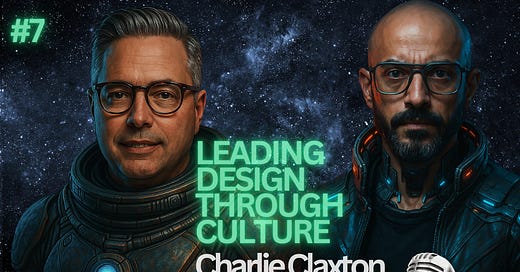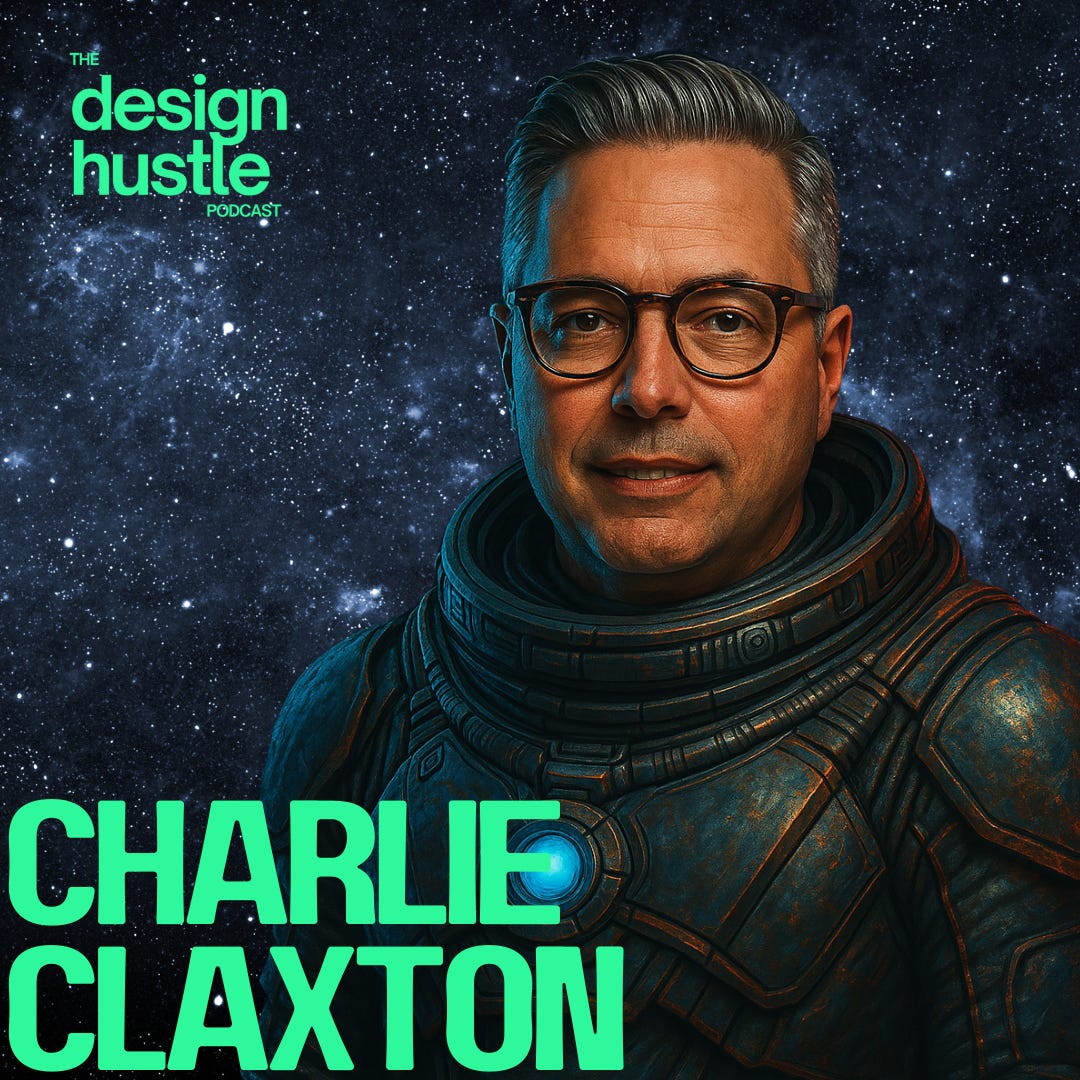Overview
In this conversation, Charlie Claxton shares his extensive experience in design and product development, discussing his journey from building high-speed in-flight internet to leading design teams at Thomson Reuters. He emphasizes the importance of creating a supportive team environment, the challenges of managing a large design organization, and the cultural dynamics at Amazon.
Charlie also reflects on his transition from running an agency to working in large organizations, highlighting the significance of collaboration and user-centered design in delivering successful products. In this conversation, Charlie Claxton discusses his experiences with organizational change, the importance of fostering innovation within teams, and the cultural transition he faced moving from the US to Switzerland.
He emphasizes the need for leaders to evaluate team dynamics, support employee growth, and create a diverse and happy work environment to drive successful product development.
About the guest
Charlie Claxton is a transformative Creative Product Leader with over 20 years of experience delivering AI-powered, customer-first product innovations that drive measurable business outcomes.
As part of the top 20 Global Leadership Team at Thomson Reuters, he leads innovation and oversees all product and digital experiences for the $6B global organization—contributing to consistent 6–8% year-over-year growth and a 95%+ increase in share price during his tenure. From founding Produxs—an award-winning UX design agency with Amazon as its first client—to spearheading digital and AI transformation initiatives across Fortune 500 companies in both the U.S. and Europe, Charlie has built and scaled high-performing, cross-functional teams that influence strategy and launch impactful solutions. His work includes driving a 118% increase in Gross Merchandise Sales at Amazon, delivering an 80% YoY increase in digital sales at Thomson Reuters, and boosting customer satisfaction for Microsoft through intelligent marketing operations tools.
Outside of work, Charlie explores Zürich in search of the perfect burger, dabbles in jazz guitar, catches the occasional rugby match, and mentors emerging creative talent to help shape the future of the industry.
https://www.linkedin.com/in/charlieclaxton/
Podcast Summary
(01:09) Charlie’s Self-Introduction
He explains design to non-designers as building front-end experiences across consumer and B2B products, focusing on interaction design, user research, and mental models.(03:11) Current Role at Thomson Reuters
Leads global UX for all front-end digital experiences with a team of ~350 across 7 countries, covering UX design, research, accessibility, content design, and UX engineering.(06:32) Building Centralized Design at TR
He was hired to centralize and scale design at TR, growing from 120 to 350+ by introducing mechanisms for decision-making and embedding a writing culture (inspired by Amazon).(12:41) Early Career & Big Break
Moved to Seattle with no job, landed a role at Boeing via a headhunter, helped build the first high-speed in-flight internet, and later founded his own UX agency.(13:43) Amazon Entry as First Certified UX Vendor
Amazon became his agency’s first major client. He was later hired internally, working at AWS and then Alexa Everywhere, launching major initiatives like the design system and third-party app store.(25:03) Amazon Culture & Design Challenges
Emphasized the need to fight for design’s voice in a tech-heavy environment, while leveraging leadership principles to align teams on customer-first outcomes.(28:00) Leadership Framework (30-60-90 Days)
When joining a new org, he categorizes what to keep, fix, or transform and evaluates team members based on future needs, adjusting org structure to improve fit and outcomes.(32:06) From Functional to Strategic Design
Shifted the design team’s role from functional support to strategic drivers of business decisions, evolving from pod structures to hybrid centralized models.(35:16) Fostering Innovation with Design Dash
Introduced a 2-week internal innovation sprint aligned with customer experience goals to boost morale, collaboration, and creative thinking.(45:24) European Work-Life Balance
Reflects on moving to Switzerland during the pandemic, appreciating European values of time-off, structured culture, and personal identity beyond job titles.(51:26) Diversity in Hiring
Actively builds culturally and gender-diverse teams to bring richer perspectives and create better, more inclusive products.
Discussion takeaways
Charlie builds and launches consumer and B2B products.
He leads a large design team at Thomson Reuters.
Experience in every role helps him connect with his team.
Hiring better people is key to building a strong team.
A writing culture helps disseminate information effectively.
Charlie's team built the first high-speed in-flight internet.
He transitioned from agency work to Amazon as a client.
Managing an agency involves feeding the business engine.
Cultural dynamics at Amazon vary between teams.
Delivering great experiences is focused on the customer. When joining a new organization, categorize existing systems into three buckets: thriving, mediocre, and failing.
It's essential to evaluate team members' potential and fit within the organization.
Parting ways with talented individuals can sometimes be necessary for their growth.
Creating opportunities for innovation should be integrated into daily work, not isolated in separate teams.
Cultural differences can significantly impact work-life balance and personal identity.
In Switzerland, the focus is more on personal identity than job titles during introductions.
A diverse team brings varied perspectives, enhancing creativity and product quality.
Happy employees contribute to better products and overall success.
Regular reflection on past performance helps in making necessary adjustments for future success.
Building a supportive and inclusive environment fosters team collaboration and innovation.












Share this post